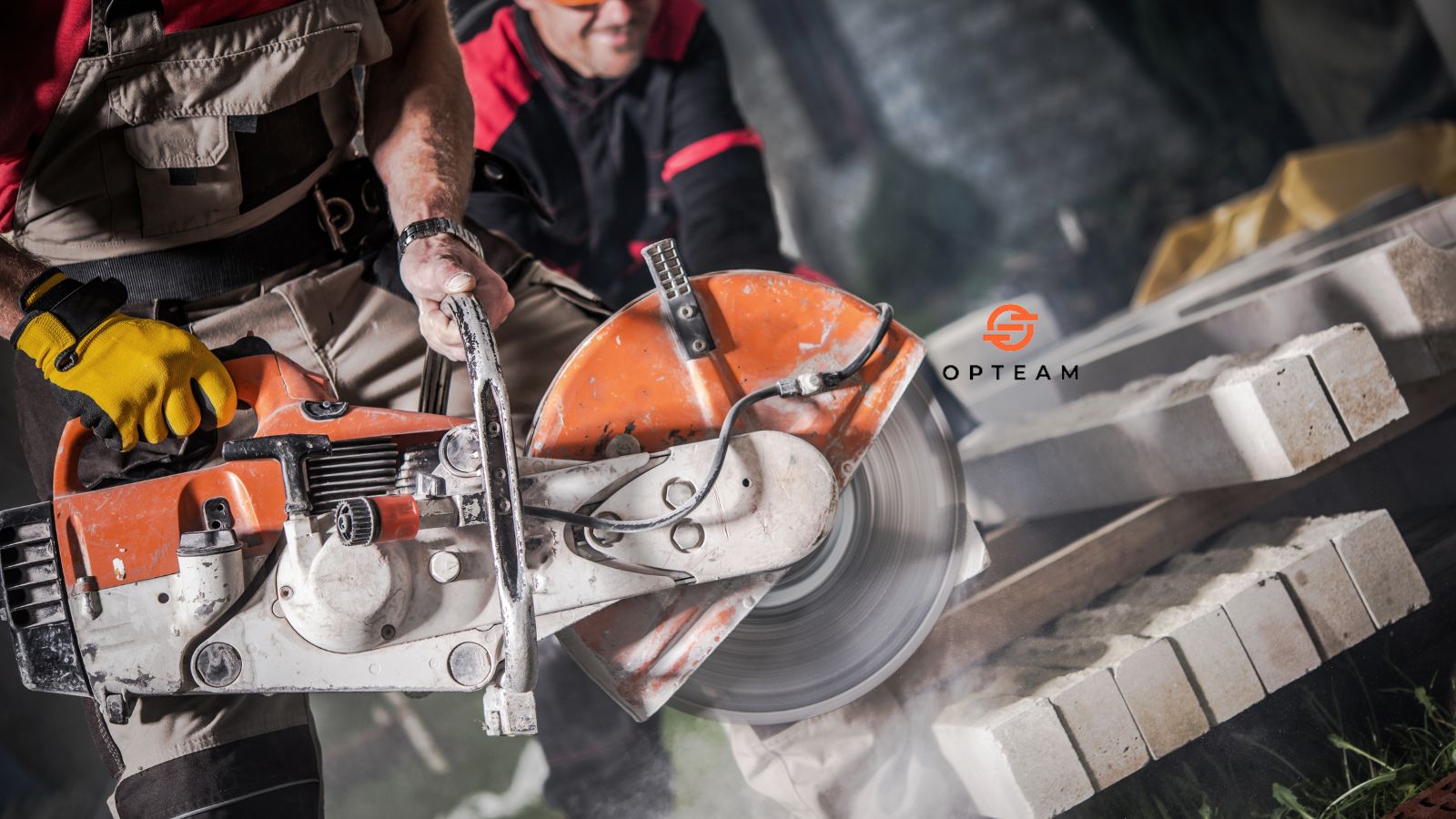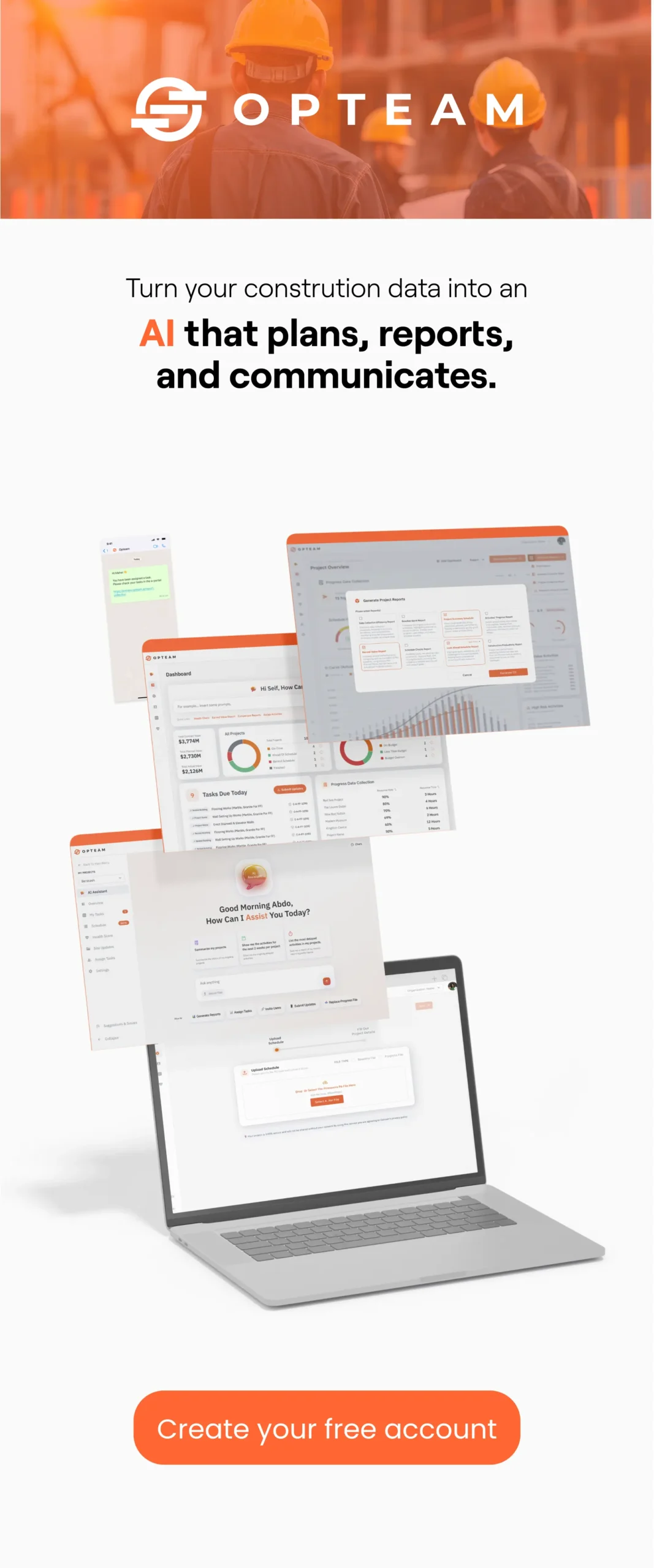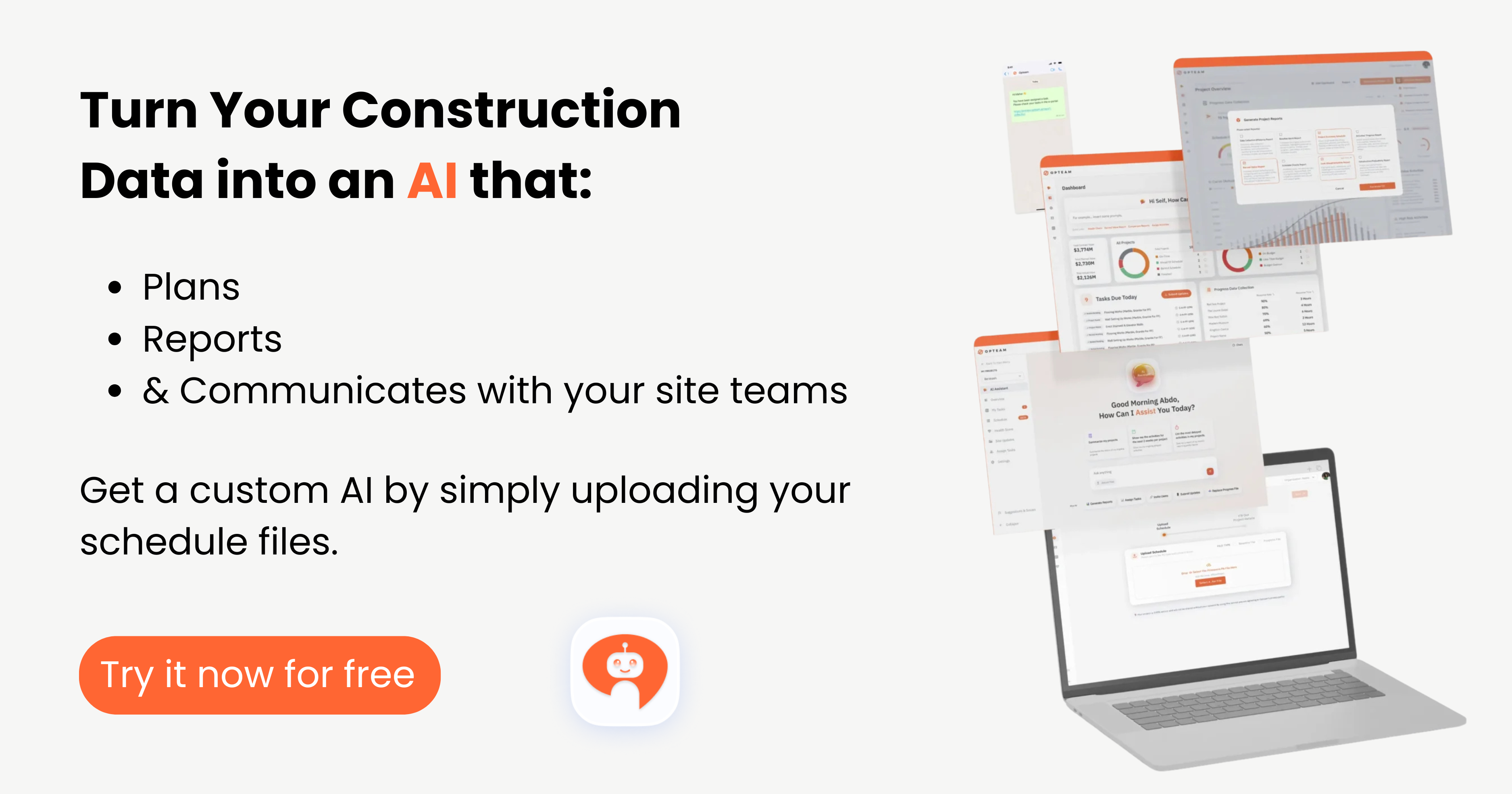You’re in the middle of a construction project, and things aren’t going as planned. Delays pile up, budgets stretch thin, and productivity takes a hit. It’s frustrating, but you’re not alone—90% of construction projects go over budget, with an average overrun of 28%.
Think about what that means for your project. Missed deadlines, higher costs, and endless headaches trying to get things back on track.
You’re constantly firefighting instead of focusing on delivering quality work. The stress of managing all the moving parts manually? It’s holding you back.
AI is changing the game.
By integrating AI-powered tools into your workflow, you can predict delays before they happen, optimize resources, and keep your project running smoothly—without the usual chaos.
Instead of reacting to problems, you stay ahead of them. The question isn’t whether AI can help—it’s how long you can afford to wait before using it.
The Productivity Challenge in Construction
Construction sites are a whirlwind of activity, involving multiple teams, unpredictable weather, and strict deadlines. With so many factors at play, productivity often takes a hit. Some of the biggest challenges include:
- Poor project planning – Misjudging schedules and resources can cause frustrating delays.
- Inefficient communication – If teams aren’t on the same page, work slows down and mistakes happen.
- Limited progress tracking – Relying on manual updates can make it tough to see where the project truly stands.
- Cost overruns – Unexpected expenses creep in due to mismanagement and inefficiencies. The good news? AI-powered tools like Opteam can help solve these problems and revolutionize the way construction teams work.
10 Tips to Improve Construction Productivity
Boosting construction productivity isn’t just about working harder—it’s about working smarter. Delays, miscommunication, and inefficiencies slow projects down, but with the right strategies, you can keep everything on track. Here’s how to take control of your project’s success:
1- Plan and Schedule Smarter
A solid plan is the foundation of a successful project. AI-driven baseline health checks can analyze schedules, highlight risks, and optimize timelines, so you can prevent delays before they happen.
2- Keep Communication Flowing
Miscommunication is one of the biggest productivity killers. Real-time dashboards, automated reporting, and instant updates keep everyone aligned, ensuring that teams always have the latest on-site information.
3- Streamline On-Site Logistics
Construction sites can be chaotic, and poor logistics make it worse. Automating resource tracking, optimizing material deliveries, and organizing equipment movement reduces downtime and keeps operations running smoothly.
4- Track Performance in Real Time
Without data, it’s impossible to know if your project is on course. AI-powered KPIs and real-time performance tracking let you spot bottlenecks early and make adjustments before issues escalate.
5- Cut Down on Repetitive Work
Manual project management slows everything down. Automating workflows eliminates repetitive tasks, freeing up time to focus on high-priority decisions that drive progress.
6- Build Sustainably Without Added Costs
Sustainability isn’t just an environmental concern—it’s a cost-saving opportunity. AI can help track and reduce material waste, optimize energy use, and ensure compliance with sustainability goals without increasing expenses.
7- Foster Collaboration Across Teams
Construction projects rely on seamless teamwork. Integrated project management tools make it easier to share data, coordinate tasks, and ensure alignment across all teams, reducing rework and miscommunication.
8- Stay Ahead on Safety and Risk Management
Safety should never be an afterthought. AI-driven risk assessments proactively identify potential hazards, helping teams prevent accidents before they happen and ensuring compliance with safety regulations.
9- Automate Schedule Revisions
Projects evolve, and schedules need to adapt. Instead of manually adjusting timelines, automated schedule revisions provide instant fast-tracking suggestions and predictive scheduling for claims reports.
10- Optimize Scheduling for Better Outcomes
Traditional scheduling methods can be rigid and slow to adapt. Outcome-driven scheduling allows you to set time or cost objectives, and AI automatically generates optimized schedules to meet those goals.
By implementing these strategies and leveraging AI-powered tools like Opteam, construction teams can work more efficiently, reduce costly errors, and keep projects on time and within budget.
The Future of AI in Construction
The construction industry is evolving, and companies that embrace AI-driven solutions like Opteam will have a competitive edge. With smarter planning, better communication, and real-time analytics, construction teams can complete projects faster, reduce waste, and improve profitability.
AI is not just a trend—it’s the future of construction. Companies that adopt AI-driven solutions now will be better equipped to handle industry challenges and outperform competitors.
If you’re ready to take your construction productivity to the next level, it’s time to explore Opteam. Signup and see how AI-powered tools can make your projects more efficient and stress-free.


